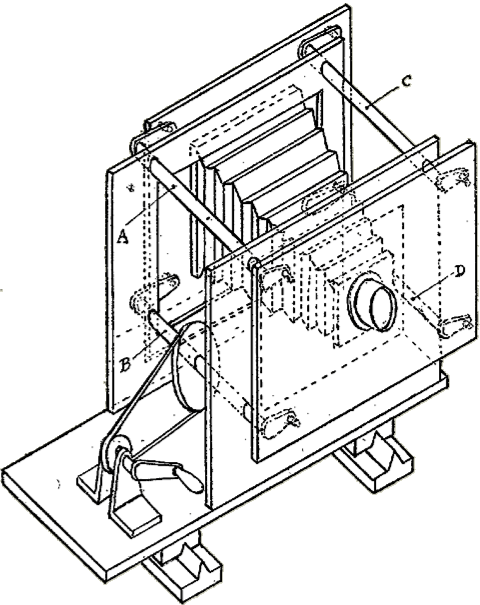Photostereosynthesis
Garnet Hertz
This project excavates photostereosynthesis, a lost imaging technology developed by the co-inventor of contemporary cinema, Louis Lumière. This imaging technology, released in 1920, produces dimensionally deep and multi-layered images through a series of stacked photographs. In this process, individual frames are shot at extremely small depths of field (wide aperture) at incrementally increasing focal lengths (focus pull), which has the effect of "depth-slicing" of a dimensional space with the help of focus. Each individual exposure is printed as a transparent positive on glass and stacked to produce a composite 3D photo with the scene "entombed" in a translucent image several centimeters thick. The resulting composite image is somewhat similar to a hologram but is a physically volumetric representation.
Historiographically, this project proposes that Lumière's primary interest in the invention of cinema over two decades before was the exploration of depth, not movement. In other words, the dimensionality of photostereosynthesis (1920) is used to speculate whether Louis Lumière's goals in the invention of cinema (1895) was to primarily capture a sense of three dimensional space as opposed to a moving two dimensional image. This work does not present this as a fact, but explores it as a historical, technological and social potential. As media archaeology, it digs back into time and revises history to tell a narrative of photostereosynthesis and cinema being developed concurrently.
Photostereosynthesis - Project Proposals
Proposal #1. PRIMARY PROJECT CONCEPT - Custom hardware/software: Photostereosynthesis Camera Controller, with overview of photostereosynthesis history and technique, 2008.
Proposal #2. Installation: Photo-stéréo-synthèse: La Sortie de l'Usine Lumière à Lyon - Installation Concept, gallery installation proposal and sketch, 2008.
Proposal #3. Production & installation: Montréal Photostereosynthesis: L'arrivée d'un train à La Ciotat, site specific art production and installation proposal for Montréal Canada, 2008.
Proposal #4. Imaging research: Extraction of 3D Data Through Single-Lens SLR Camera System, based on photostereosynthesis, imaging and visualization research, 2008.
Proposal #5. Imaging research: Low Cost Volumetric Printing, based on photostereosynthesis, imaging and visualization research, 2008.
Sketches in Photostereosynthesis
Sketch #1. Java applet: Extruded still from La Sortie de l'Usine Lumière à Lyon (1895)
Sketch #2. Java applet: Extruded layer from Portraits of Auguste Lumière, stages in ‘photostéréosynthèse’ (c.1920)
Sketch #3. Image: Diagram of orthographic view of photostereosynthesis layers, using Portraits of Auguste Lumière, stages in ‘photostéréosynthèse’ (c.1920)
Sketch #4. Animation: Four stage wiggle stereoscopy of photostereosynthesis layers, using Portraits of Auguste Lumière, stages in ‘photostéréosynthèse’ (c.1920)
Sketch #5. Image: Positioning of La Sortie de l'Usine Lumière à Lyon (1895) frame with contemporary photograph
Sketch #6. Video diagram: Repositioning of La Sortie de l'Usine Lumière à Lyon (1895) video with contemporary photograph
Photostereosynthesis - Historical Documentation
Document #1. Louis Lumière, Représentation photographique d'un solide dans l'espace. Photo-stéréo-synthèse (452K PDF), Académie des Sciences, November 8th 1920.

[Garnet Hertz, 2009]
